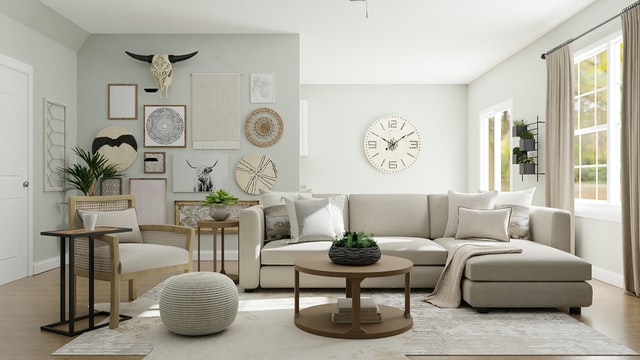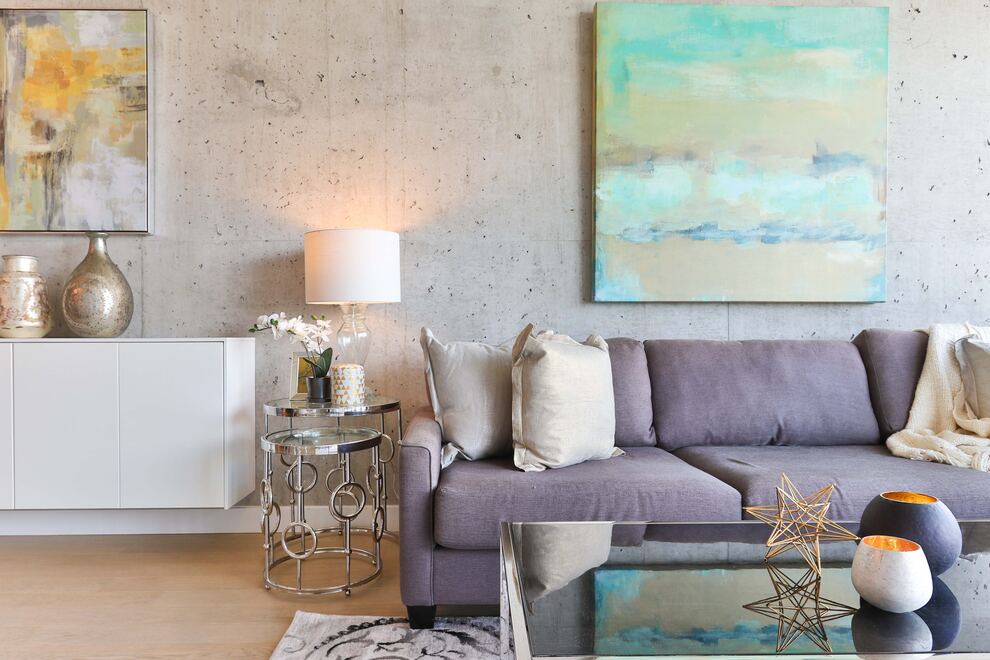If you’re like most people, you spend most of your time indoors. But sunlight is vital for both our physical and mental health. There are ways that homeowners can infuse more natural light into their homes to enjoy its health benefits. Still, a home filled with sunlight offers other advantages too. A simple trend in architectural psychology for creating good settings is to create rooms that let sunlight in from at least two sides. We’ll explore why you should consider adding more natural light to your home and how to do it.
What are the benefits of adding natural lighting to your home?

Natural light is a dazzling complement to virtually any interior space regardless of how it’s decorated, what its floor plan is like, or how it’s used. Unfortunately, many homes of past decades weren’t designed to maximize natural lighting. By making small changes or even some larger renovations, you can enjoy the benefits of a home filled with natural light.
Save energy and money
Unlike most things in this world, sunlight is free. The more sunlight you can infuse into your living space, the less you rely on electric lighting to light your house. According to some studies, spaces that depend on daylight-sensing controls can reduce their reliance on electric lighting by up to 60%. That not only results in lower electric bills, but it means that homeowners will have to replace light bulbs less frequently too.
Reducing your use of electricity is also better for the environment. Many homeowners today are looking for ways to lead more sustainable households and live greener lives. By installing more natural lighting in the areas of your home where you need it most, you can reduce your use of electric lighting by as much as half.
Increase home value
Today, house hunters are searching for homes that can boast an abundance of natural light. They’re looking for larger windows, skylights, and solar tubes. Natural lighting features are selling points for homes today, and buyers are willing to pay for them. In many cases, you can recoup the cost to install components like skylights and cathedral windows with your home value increase.
Improve focus and concentration

Many companies today are investing in spaces with improved access to natural lighting. Many studies have indicated that natural lighting increases productivity and improves focus and concentration. According to a study from Cornell University, workers in daylit office settings “reported an 84 percent drop in symptoms of eyestrain, headaches, and blurred vision.” Fewer headaches and reduced eye strain, not surprisingly, result in the ability to stay focused and on task better than in artificially lit spaces.
Reduce stress and anxiety
Daylit spaces can reduce the effects of stress and anxiety. Medical studies have indicated that people have more serotonin, a brain chemical associated with feelings of well-being, on sunny days instead of dark or overcast days. With more sunlight entering the home, occupants may experience improved feelings of well-being and reduce stress and symptoms of anxiety or even depression.
Support your immune system
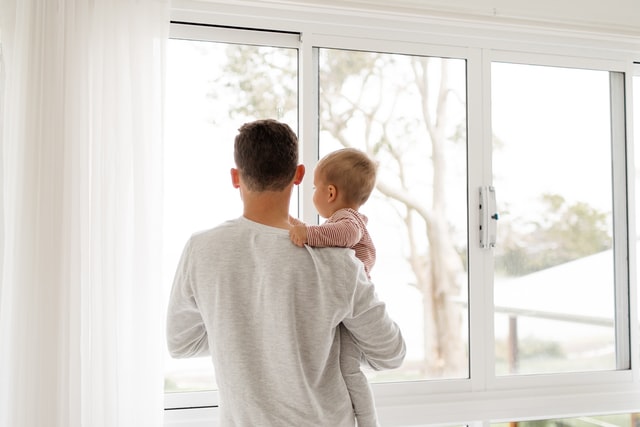
Sunlight is good for our bodies because it endows us with vitamin D, a nutrient we don’t make for ourselves. The ‘sunlight vitamin’ is crucial for our health. Whether we get more of it by standing outside or near a sunny window, we can benefit from increased vitamin D. This vitamin is necessary to prevent bone loss and even reduce the risks for heart disease and some cancers.
Increase happiness
We’ve already mentioned that increased exposure to sunlight can reduce the symptoms of anxiety and stress, but it can also help people ward off seasonal depression. Many people become irritable or experience symptoms of clinical depression during the fall and winter months when sunlight days are shorter and prone to overcast skies. The more natural light you can let into your home, the more you can support your mental health.
Enhance your vision
Natural lighting is easier on your eyes than artificial light. Natural light has been reported to reduce the risk for nearsightedness in both kids and young adults. Employees who work in offices with access to good natural light report reduced eye strain and fewer headaches related to eye strain.
Great for indoor plants
Indoor plants can add loads of aesthetic charm to our interior spaces. Still, many houseplants can actually improve the quality of our interior air with their natural air-purifying properties. Better access to natural light means healthier aloe vera, spider plants, and other popular air-purifying houseplants.
Tips to add more natural light to your home
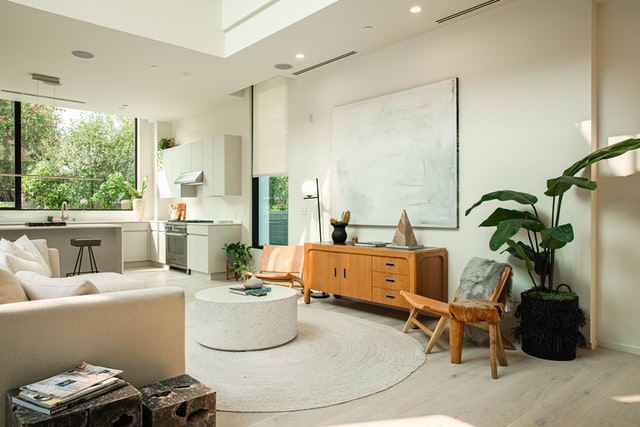
Now that we’ve covered many of the advantages of living with more natural light, let’s explore some ways to add more sunlight to your home’s interior. Remember, investing in these ideas may help you add value to your home and improve its marketability should you decide to sell it.
Lighter, brighter, glossier paints for walls and ceilings
Dark paint will make any room seem darker, no matter how large its windows happen to be. You can increase the reflective qualities of natural light in your interior space by painting your walls and ceilings with light and bright colors. Glossy paint has even more reflective quality than matte paints. Light paint makes rooms seem brighter and more spacious. This is the easiest and fastest way to brighten a room, make sure to choose your wall colors correctly, and hire a handyman to help you out with your project.
Flooring considerations
Just like your walls, your flooring can reflect natural light. To maximize the natural light in your living space, opt for lighter-hued flooring. Linoleum and glossy ceramic tile in light colors will make your area appear better lit than darker-hued floors.
Use glass or highly reflective tiles
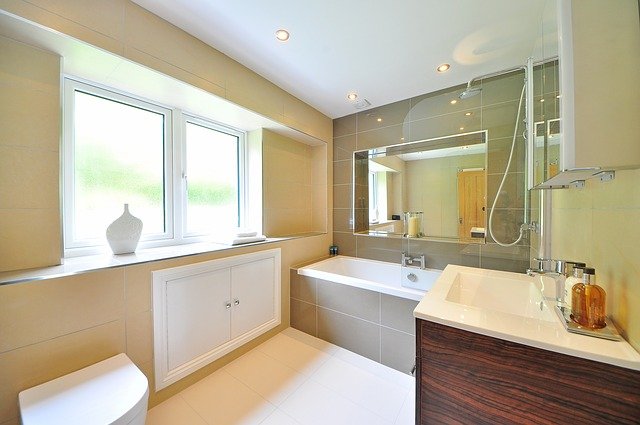
Light bounces, so by installing glass or very reflective tiles on your walls, you can infuse your living space with more natural light. This technique is ideal for bathrooms where many homeowners already feature tiles. Consider it for foyers, mudrooms, and kitchens as well.
Glass block walls
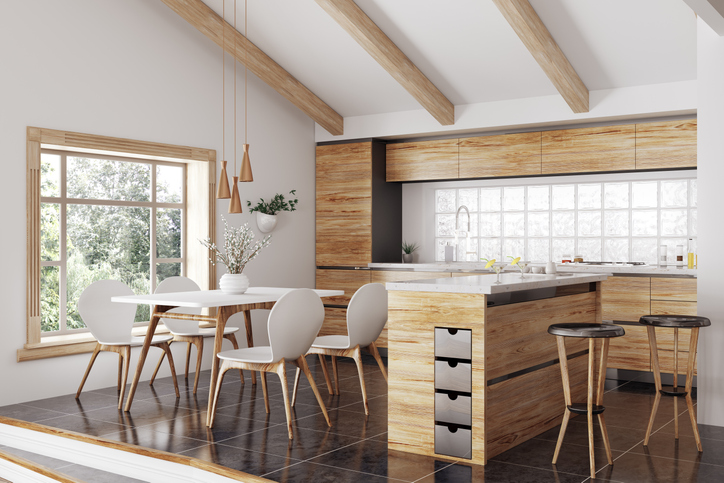
Glass block walls and windows afford privacy while letting natural light flow into your interior space. Today, glass blocks come in many different styles, so you can choose options that are ideal for your home. Another advantage of glass block walls is their natural insulating properties. They can significantly block noise, which makes them an excellent option for bathrooms and kitchens.
Install skylights
Skylights are a terrific way to bathe your living space with natural sunlight. On average, homeowners can expect to pay anywhere from $1,500 to $4,000 to install a single skylight. Higher-end skylights with solar power operation tend to cost more, but again, these features can add to your home’s value. You should also opt for no-leak skylights and have them professionally installed to ensure no damage is done to your surrounding roof.
Install solar tubes
Similar to skylights, solar tubes are smaller and, not surprisingly, tube-like in construction. A tubular skylight captures the sun’s rays using a rooftop dome. The light is then brought indoors via a highly reflective tube-shaped duct. Natural light is dispersed into the room below by a diffuser mounted in the ceiling.
Tubular skylights from Solatube can be easily configured to avoid attic obstructions and provide natural light where it is required. Tubular skylights, which can be installed in hallways, laundry rooms, bathrooms, and walk-in closets, not only brighten interiors but also help homeowners save money on electrical costs. Many homeowners prefer to install solar tubes instead of skylights in smaller spaces like powder rooms or hallways.
Install floor-to-ceiling opening glass walls
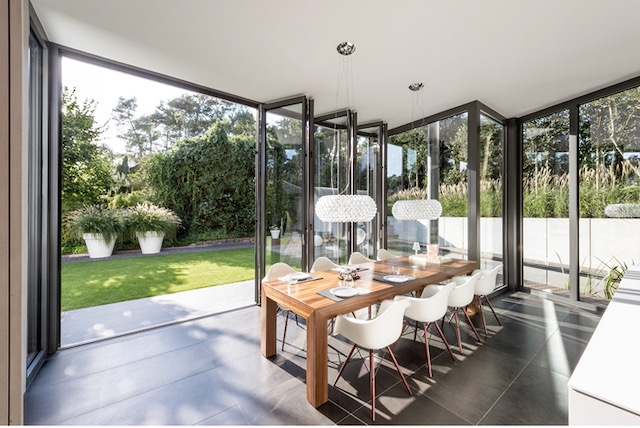
Image courtesy of NanaWall Systems
If you’re designing a new home, installing folding glass walls to maximize the amount of sunlight entering your home is recommended. Still, even if you’re considering a window replacement or renovating your existing home, enhance the overall feel of your home with the indoor/outdoor experience. For instance, you can replace a front picture window with a folding glass wall or sliding glass wall system where there was formerly just a small window space. Keeping your windows clean will also allow you to let more light filter into your living space.
If you’re contemplating a window replacement or home renovation, embracing the concept of glass houses by incorporating folding glass walls can seamlessly blend your indoor and outdoor spaces, creating a modern and airy ambiance. If you’re aiming to maximize sunlight in your home, this architectural choice can be both practical and aesthetically pleasing.
Install a roof lantern
A roof lantern is an architectural skylight structure that allows for a tremendous amount of natural light to enter the interior space. Think about the roof of a greenhouse or atrium, and you have an idea of what a residential roof lantern may look like. If you’re planning to replace your home’s roof, you might consider installing a roof lantern on an area of your home that can be complemented by such a feature—a living room or dining room, for example.
Add shiny features to your space
Shiny objects like mirrors and decorative objects can keep natural light bouncing around from surface to surface. Metallic vases, picture frames, and furnishings will help you increase the brightness in your setting. If you are trying to light a particularly small space, increase the size of mirrors for maximum light reflection. Mirrors and shiny objects will help you create the illusion of more space and light in any room of your home.
Light furniture
Light furniture can help you create a brighter interior space. Dark colors recede and can make a room feel cozy but also less brightly lit. If you’re purchasing new furnishings, choose light colors like ivory or beige. You can also paint dark wood furniture in a brighter hue to lighten up your living space.
White curtains
Room-darkening curtains can serve a purpose in the bedroom, but if you want to bathe any room with more natural light, opt for white curtains—especially sheer curtains. White curtains will complement nearly any decorative plan. They will brighten your living space even at night when the sun goes down.
Add houseplants to your space
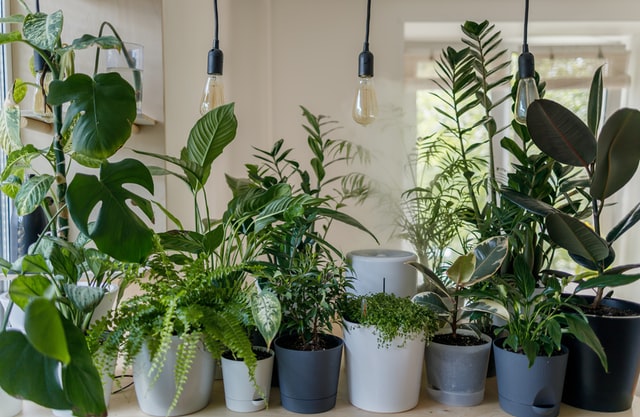
Houseplants won’t add light to your interior space, but they are light lovers and will help you bring more of an outdoor feel into your home. Again, opt for houseplants that are known for their air-purifying properties. Hanging plants in windows or having a plant wall will help you add some privacy to them while still allowing sunlight to filter into the room.
A well-lit home that’s filled with natural light offers numerous benefits. As you can see, there are many ways to add more natural light to your interior space, and some are pretty inexpensive. If you choose to invest in pricey natural lighting features, you’re likely to recoup their cost with increased home value. Keep these tips in mind the next time you plan to make some improvements to your home.
